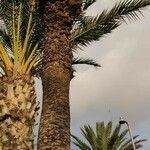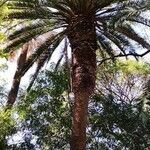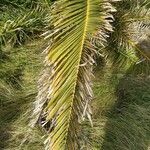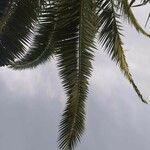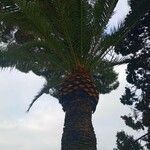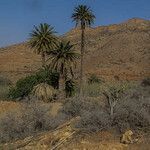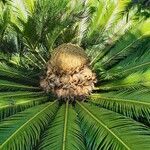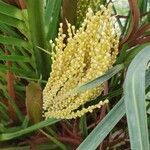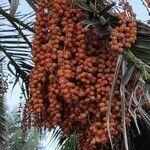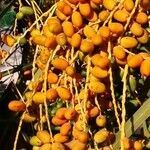Solitary palms to 20 m tall; trunk to 1 m diam. Leaves c. 100, to 6 m long. Pinnae c. 200 each side of rachis, regularly arranged in 1 plane, to 40 cm long, to 3 cm wide, dull glaucous green on both surfaces. Staminate inflorescence to 80 cm long; flowers yellowish, 9–10 mm long. Pistillate inflorescence to 80 cm long, similar to staminate but with elongate peduncle; flower yellow, to 4.5 mm diam. Fruit ellipsoid to ovoid, 15–20 mm long, 9–12 mm diam., yellow to orange-red; mesocarp thin and dry. Seed to 15 mm long, to 10 mm wide.
Trunk stocky, thick, up to 6 m tall and 45-60 cm diam., covered by large, closely packed leaf-scars. Leaves dark green, long, arched outwards from the terminal crown, segments very numerous, narrow, strongly keeled, sharply pointed. Berry 2.5-5 cm long, cylindrical-elliptic, orange-yellow.
Stems solitary, erect, to 15 m, diam. 55--70 cm. Fruits ripening from green through orange to reddish purple, ellipsoid, length 24--27 mm, diam. 10--12 mm.
